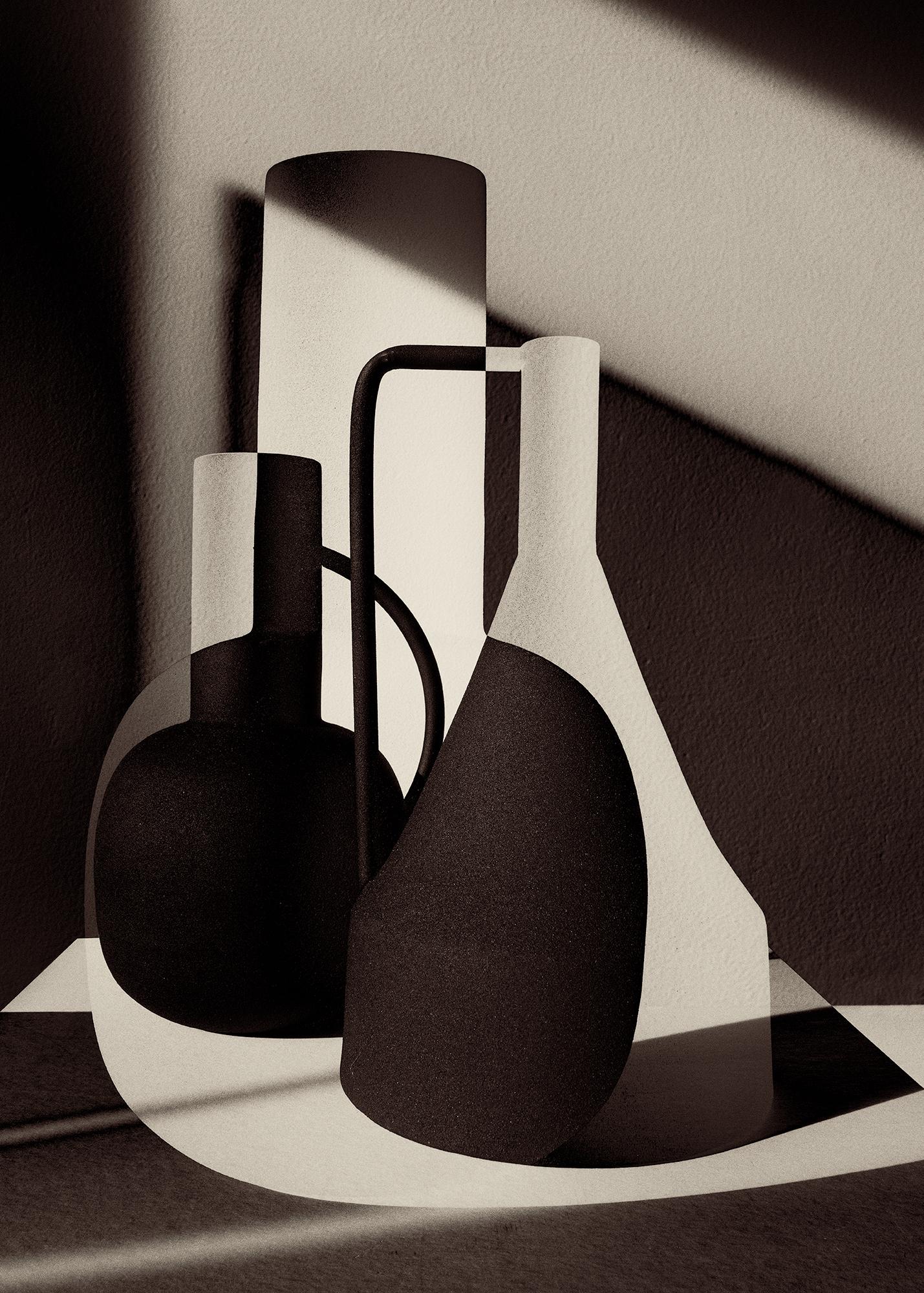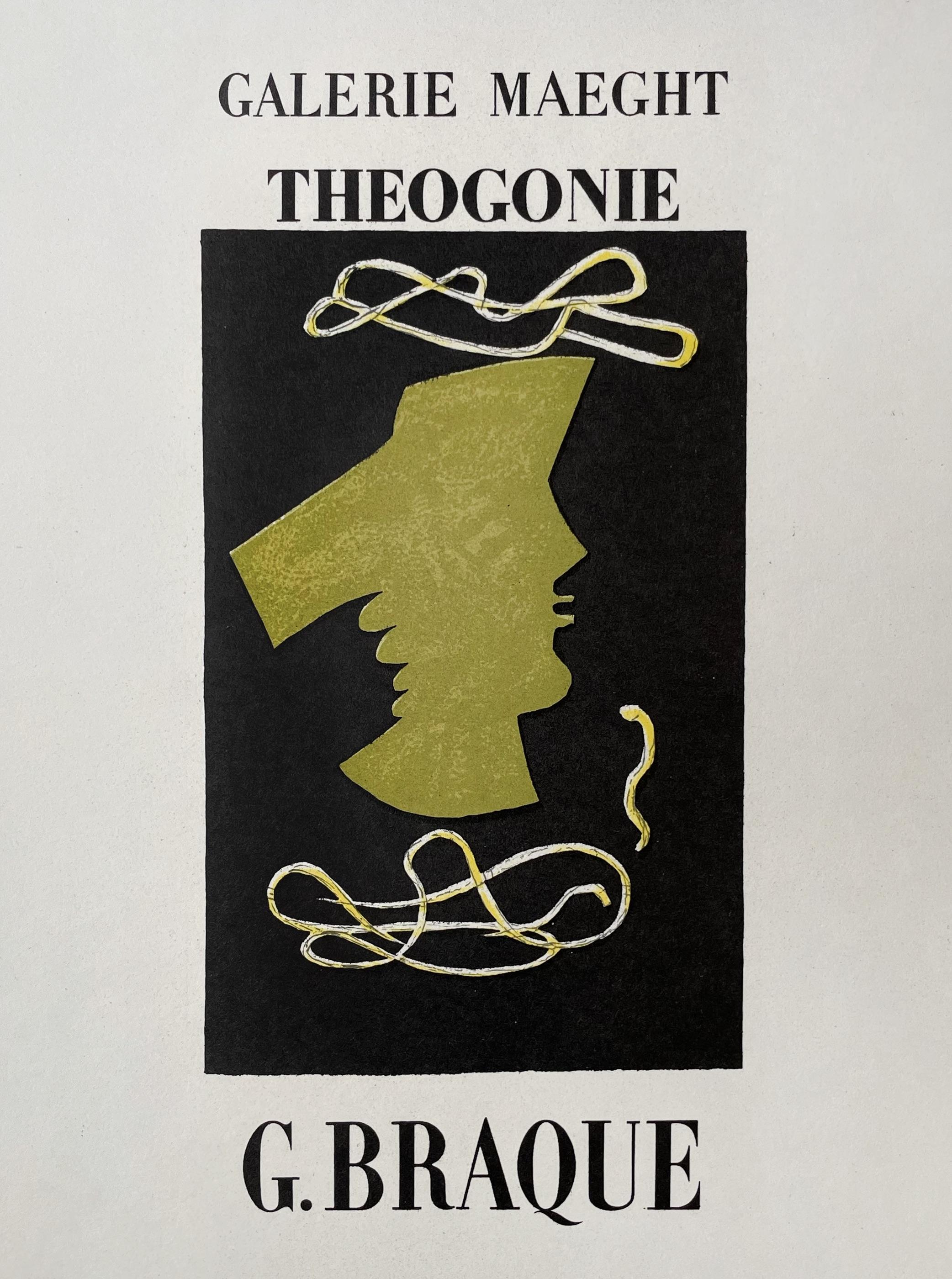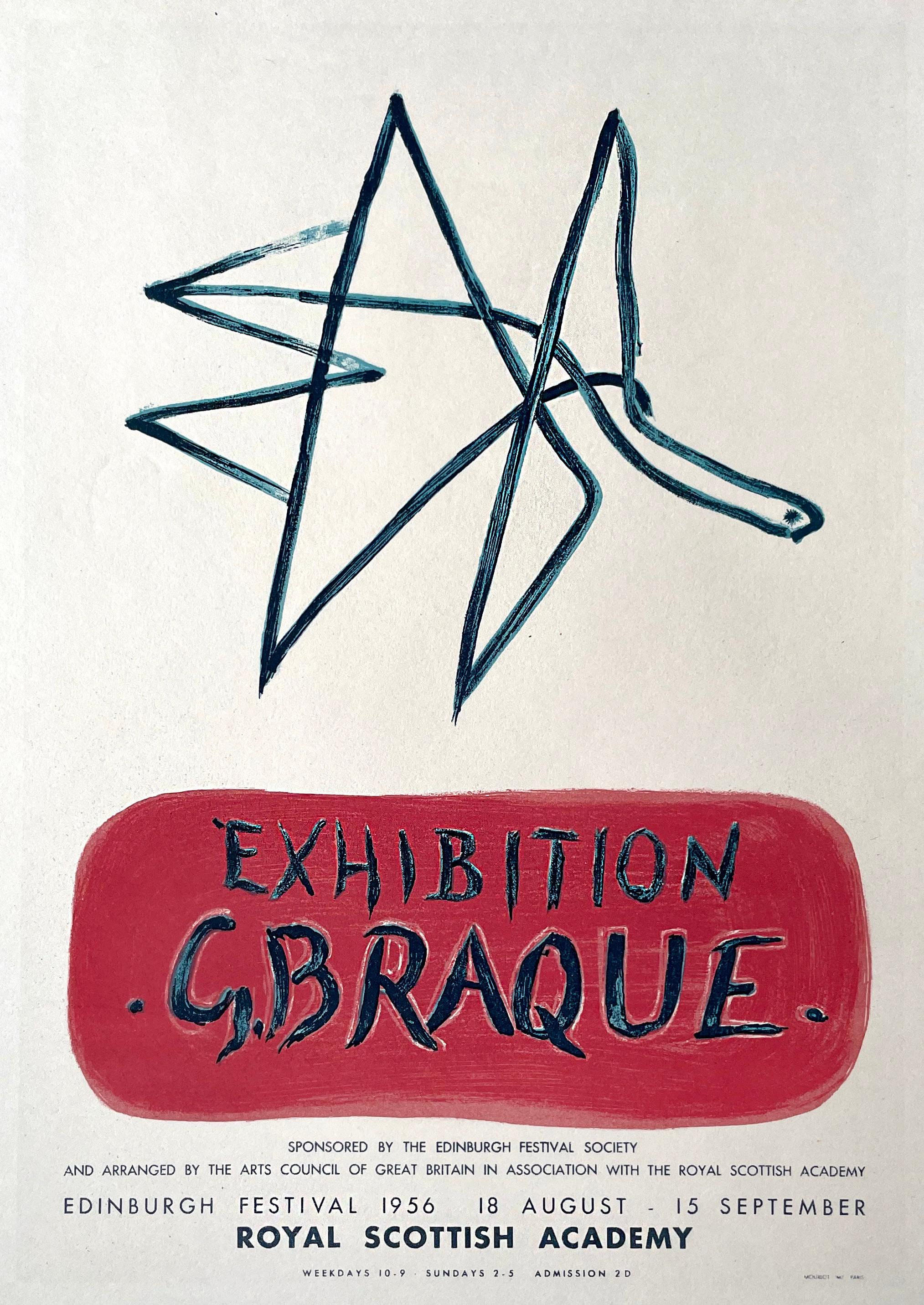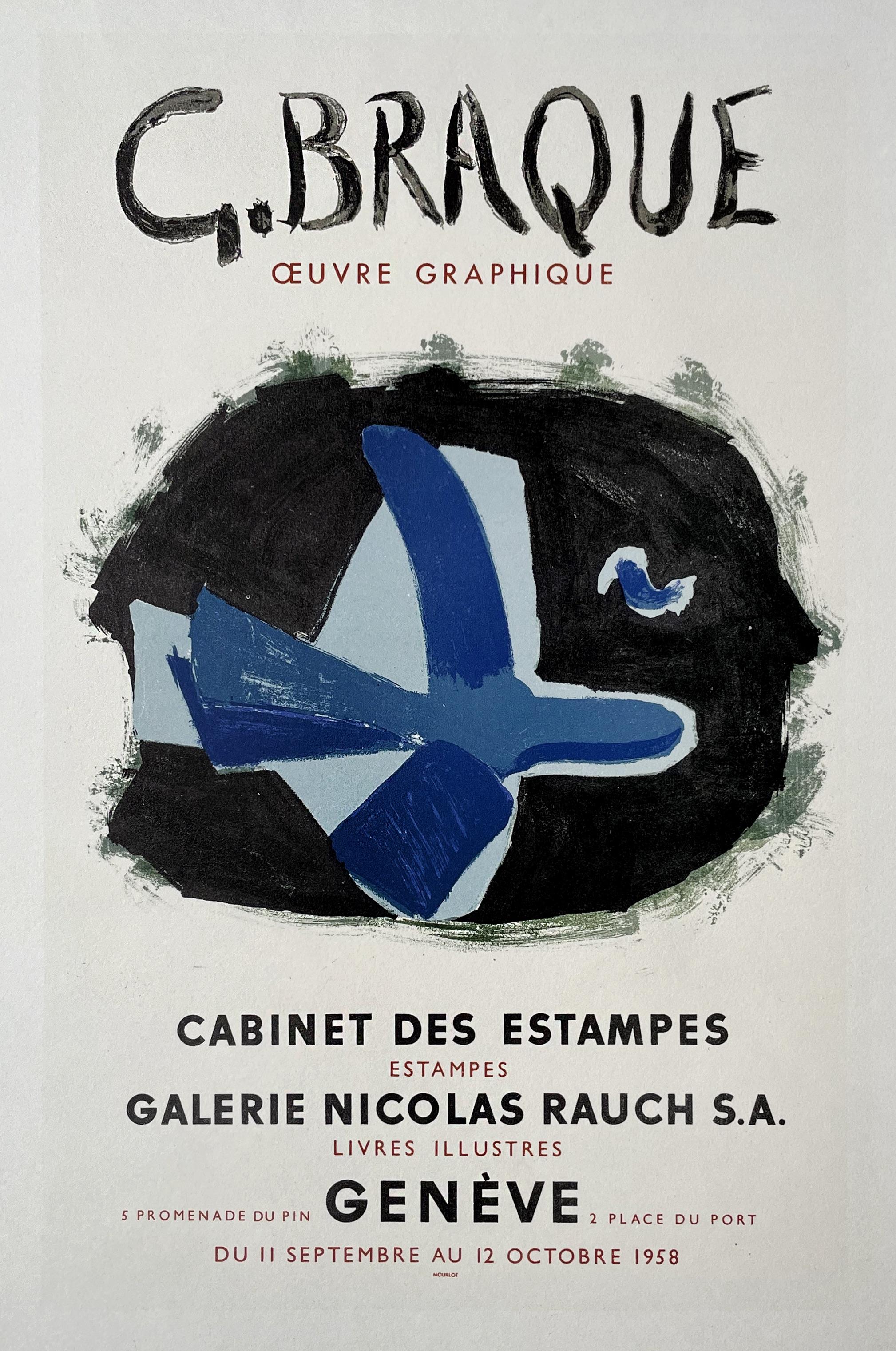Items Similar to 'Descente de Croix' (Descent from the Cross) — 1920s French Cubism
Want more images or videos?
Request additional images or videos from the seller
1 of 6
Albert Gleizes'Descente de Croix' (Descent from the Cross) — 1920s French Cubism1928
1928
About the Item
Albert Gleizes, 'Descente de Croix', color pochoir, 1928, edition c. 50. Signed and dated in pencil. A fine, painterly impression, with fresh colors, on heavy, cream wove paper; the full sheet with margins (3 to 4 inches), in very good condition. The publisher's ink stamp 'EDITIONS MOLY-SABATA' beneath the image, lower left. Matted to museum standards, unframed.
Image size 12 x 14 inches (305 x 356 mm); sheet size 18 x 22 inches (457 x 559 mm).
ABOUT THE IMAGE
After the 1927 painting 'Descente de Croix', one of three religious-themed works that Gleizes developed as preliminaries for murals at the church at Serrières, France, the project was terminated at its final phase, and Gleizes commissioned master printer Robert Pouyaud to create prints of the paintings, closely overseeing the production.
ABOUT THE MEDIUM
Pochoir is a refined stencil-based technique employed to create multiples or to add color to prints produced in other mediums. Characterized by its crisp lines and rich color, the print-making process was most popular from the late 19th century through the 1930s, with its center of activity in Paris. The pochoir process began with the analysis of an image’s composition, including color tones and densities. The numerous stencils (made of aluminum, copper, or zinc) necessary to create a complete image were then designed and hand-cut by the 'découpeur.' The 'coloristes' applied watercolor or gouache pigments through the stencils, skillfully employing a variety of different brushes and methods of paint application to achieve the desired depth of color and textural and tonal nuance. The pochoir process, by its handcrafted methodology, resulted in the finished work producing the effect of an original painting, and in fact, each print was unique.
ABOUT THE ARTIST
Albert Gleizes (1881-1953), born in Paris, France, was a pioneering figure in the development of abstract art and one of the leading proponents of Cubism. His contributions to the art world extended beyond his paintings; he was also a prolific writer and theoretician, advocating for a new approach to art that emphasized the geometric abstraction of form and a departure from representational traditions.
Gleizes initially studied painting at the Académie Julian and the École des Beaux-Arts in Paris, where he was exposed to the academic conventions of the time. However, his artistic vision was profoundly influenced by encounters with avant-garde movements, including Fauvism and the work of Paul Cézanne. These influences led Gleizes to experiment with form and color, gradually moving away from traditional representation toward a more abstract and geometric style.
After completing his secondary schooling, Gleizes spent four years in the French army and then began pursuing a career as a painter, primarily doing landscapes. Initially influenced by the Impressionists, he was only twenty-one years of age when his work titled ‘La Seine à Asnières’ was exhibited at the Société Nationale des Beaux-Arts in 1902. The following year, he was part of the first Salon d'Automne and soon came under the influence of Fernand Léger, Robert Delaunay, Jean Metzinger, and Henri Le Fauconnier. In 1907, Gleizes and some of his friends pursued the idea of creating a self-supporting community of artists that would allow them to develop their art free of any commercial concerns. For nearly a year, Gleizes , with other painters, poets, musicians, and writers, lived at a large house in Créteil, but a lack of funds forced them to give up their facility in early 1908, and Gleizes moved temporarily into La Ruche, the artist commune in the Montparnasse Quarter of Paris.
In the early 1910s, Gleizes became associated with the Cubist movement, which was spearheaded by artists such as Pablo Picasso and Georges Braque. Cubism sought to represent the multidimensional aspects of reality by breaking down forms into geometric shapes and exploring multiple perspectives within a single composition. Gleizes's contributions to Cubism were significant, as he co-authored the influential treatise "Du Cubisme" (On Cubism) with Jean Metzinger in 1912, outlining the principles and theories behind the movement.
With the outbreak of World War I, Albert Gleizes re-enlisted in the French army. He was put in charge of organizing entertainment for the troops and, as a result, was approached by Jean Cocteau to design the set and costumes for the William Shakespeare play, ‘A Midsummer Night's Dream.’ Discharged from the military in the fall of 1915, Gleizes and his new wife, Juliette Roche, the daughter of a prominent and wealthy French statesman, moved to New York City. From there, the couple sailed to Barcelona, Spain, where they were joined by Marie Laurencin, Francis Picabia, and his wife. The group spent the summer painting at the resort area of Tossa del Mar, and in December, Gleizes had the first solo exhibition of his works at the Galeries Dalmau in Barcelona. Returning to New York City, Gleizes began writing poetic sketches in verse and in prose. Traveling to Bermuda, he painted a number of landscapes, but when the war in Europe ended, he returned to France, where his career evolved into teaching through writing, and he became involved with the committee of the Unions Intellectuelles Françaises. In 1927, still dreaming of the communal days in Créteil, he founded an artist's colony at a rented house called the Moly-Sabata in Sablons near his wife's family home in Serrières in the Ardèche département in the Rhône Valley.
In 1931, Gleizes was part of the committee of Abstraction-Création that acted as a forum for international non-representational art. By this time, his work reflected the strengthening of his spiritual convictions, and his 1932 book, La Forme et l’histoire, examines Celtic, Romanesque, and Oriental art. On tour in Poland and Germany, he gave lectures titled Art et Religion, Art et Production, and Art et Science. In 1937, Gleizes was hired to paint murals for the Exposition Internationale des Arts et Techniques dans la Vie Moderne at the Paris World’s Fair. He collaborated with Delaunay in the Pavillon de l'Air and with Léopold Survage and Fernand Léger for the Pavillon de l'Union des Artistes Modernes. At the end of 1938, Gleizes volunteered to participate in the free seminars and discussion groups for young painters set up by Robert Delaunay at his Paris studio.
In the late 1930s, the wealthy American art connoisseur Peggy Guggenheim purchased a great deal of the new art in Paris, including works by Albert Gleizes. She brought these works to the United States, which today form part of the Peggy Guggenheim Collection. During World War II, Gleizes and his wife remained in France under the German occupation. His religious convictions deepened, and at the war's end, he was hailed by some as having laid out the principles for a renewal of religious art. In 1948, Gleizes accepted an offer from a publisher in Casablanca to create a series of etchings illustrating the ‘Pensées sur l'Homme et Dieu’ of Blaise Pascal. In 1951, he was made a jury member for the Prix de Rome, and the French government awarded him the Legion of Honor. In 1952, he completed his last major work, a fresco titled ‘Eucharist’ created for a Jesuit chapel in Chantilly.
Throughout his career, Gleizes remained dedicated to exploring the formal possibilities of abstraction while also incorporating elements of rhythm, color, and dynamic movement into his compositions. His style evolved over time, reflecting his ongoing engagement with modernist ideas and his interest in spirituality and metaphysics.
Albert Gelizes’ work is represented in numerous museums in the United States, the United Kingdom, and Europe including the British Museum (London), Los Angeles County Museum of Art, Musée d'Art Moderne de la Ville de Paris, Musée des Beaux-Arts de Lyon (Lyon, France), Musée de Grenoble (Grenoble, France), Musée National d'Art Moderne (Centre Georges Pompidou, Paris), Museum of Modern Art (New York), National Gallery of Art (Washington, D.C.), Peggy Guggenheim Collection (Venice, Italy), Solomon R. Guggenheim Museum (New York), The Metropolitan Museum of Art (New York), Philadelphia Museum of Art, Tate Modern (London).
- Creator:Albert Gleizes (1881-1953, French)
- Creation Year:1928
- Dimensions:Height: 12 in (30.48 cm)Width: 14 in (35.56 cm)
- Medium:
- Movement & Style:
- Period:
- Condition:
- Gallery Location:Myrtle Beach, SC
- Reference Number:
About the Seller
5.0
Recognized Seller
These prestigious sellers are industry leaders and represent the highest echelon for item quality and design.
Platinum Seller
These expertly vetted sellers are 1stDibs' most experienced sellers and are rated highest by our customers.
Established in 1995
1stDibs seller since 2016
254 sales on 1stDibs
Typical response time: 2 hours
Associations
International Fine Print Dealers Association
- ShippingRetrieving quote...Ships From: Myrtle Beach, SC
- Return PolicyA return for this item may be initiated within 7 days of delivery.
More From This SellerView All
- Variation 4, Vol. IBy Katherine Sophie DreierLocated in Myrtle Beach, SCKatherine S. Dreier, 'Variation 4, Vol. I' from '1 to 40 Variations', lithograph with pochoir and hand-coloring, 1934, edition 65. Stenciled signature and date, lower right. Annotate...Category
Mid-20th Century American Modern Abstract Prints
MaterialsWatercolor, Lithograph, Stencil
- 'Variation 5, Vol. I' — from the series '1 to 40 Variations'By Katherine Sophie DreierLocated in Myrtle Beach, SCKatherine S. Dreier, 'Variation 5, Vol. I' from '1 to 40 Variations', lithograph with pochoir and hand-coloring, 1934, edition 65. Stenciled signature and date, lower right. Annotate...Category
Mid-20th Century American Modern Abstract Prints
MaterialsWatercolor, Lithograph, Stencil
- 'Variation 8, Vol. I' — from the series '1 to 40 Variations'By Katherine S. DreierLocated in Myrtle Beach, SCKatherine S. Dreier, 'Variation 8, Vol. 1' from '1 to 40 Variations', lithograph with pochoir and hand-coloring, 1934, edition 65. Stenciled signature and date, lower right. Annotate...Category
1930s American Modern Abstract Prints
MaterialsLithograph
- 'Variation 30, Vol. II' — from the series '1 to 40 Variations'By Katherine S. DreierLocated in Myrtle Beach, SCKatherine S. Dreier, 'Variation 30, Vol. II' from '1 to 40 Variations', lithograph with pochoir and hand-coloring, 1934, edition 65. Stenciled signature and date, lower right. Annota...Category
1930s American Modern Abstract Prints
MaterialsLithograph
- 'Flyable Objects Identified' —Mid-Century ModernBy Edward August LandonLocated in Myrtle Beach, SCEdward Landon, 'Flyable Objects Identified', color serigraph, 1969, edition 30, Ryan 83. Signed, titled, and annotated 'Edition 30' in pencil. A fine impression, with fresh colors, o...Category
Mid-20th Century American Modern Abstract Prints
MaterialsScreen
- 'European Landscape' —Mid-century American SurrealismBy Lawrence KupfermanLocated in Myrtle Beach, SCLawrence Kupferman, 'European Landscape', drypoint, edition 50, 1942. Signed, dated, titled, and numbered '7/50' in pencil. A superb, finely nuanced impression, on cream wove paper; the full sheet with margins (1 to 1 3/4 inches); in excellent condition. Image size 10 7/8 x 13 3/8 inches; sheet size 13 1/8 x 16 1/2 inches. Archivally matted to museum standards, unframed. An impression of this work is included in the permanent collection of the Syracuse University Art Museum. ABOUT THE ARTIST Lawrence Kupferman (1909 - 1982) was born in the Dorchester neighborhood of Boston and grew up in a working-class family. He attended the Boston Latin School and participated in the high school art program at the Museum of Fine Arts, Boston. In the late 1920s, he studied drawing under Philip Leslie Hale at the Museum School—an experience he called 'stultifying and repressive'. In 1932 he transferred to the Massachusetts College of Art, where he first met his wife, the artist Ruth Cobb. He returned briefly to the Museum School in 1946 to study with the influential expressionist German-American painter Karl Zerbe. Kupferman held various jobs while pursuing his artistic career, including two years as a security guard at the Museum of Fine Arts, Boston. During the 1930s he worked as a drypoint etcher for the Federal Art Project, creating architectural drawings in a formally realistic style—these works are held in the collections of the Fogg Museum and the Smithsonian American Art Museum. In the 1940s he began incorporating more expressionistic forms into his paintings as he became progressively more concerned with abstraction. In 1946 he began spending summers in Provincetown, Massachusetts, where he met and was influenced by Mark Rothko, Hans Hofmann, Jackson Pollock, and other abstract painters. At about the same time he began exhibiting his work at the Boris Mirski Gallery in Boston. In 1948, Kupferman was at the center of a controversy involving hundreds of Boston-area artists. In February of that year, the Boston Institute of Modern Art issued a manifesto titled 'Modern Art and the American Public' decrying 'the excesses of modern art,' and announced that it was changing its name to the Institute of Contemporary Art (ICA). The poorly conceived statement, intended to distinguish Boston's art scene from that of New York, was widely perceived as an attack on modernism. In protest, Boston artists such as Karl Zerbe, Jack Levine, and David Aronson formed the 'Modern Artists Group' and organized a mass meeting. On March 21, 300 artists, students, and other supporters met at the Old South Meeting House and demanded that the ICA retract its statement. Kupferman chaired the meeting and read this statement to the press: “The recent manifesto of the Institute is a fatuous declaration which misinforms and misleads the public concerning the integrity and intention of the modern artist. By arrogating to itself the privilege of telling the artists what art should be, the Institute runs counter to the original purposes of this organization whose function was to encourage and to assimilate contemporary innovation.” The other speakers were Karl Knaths...Category
1940s Surrealist Abstract Prints
MaterialsDrypoint
You May Also Like
- In Between the ShadowsLocated in London, GBThe series ‘In Between the Shadows’ consists of structural and geometric photographs that take their inspiration from the cubist movement. The works aim to challenge the conventional perception of depth within the medium of photography by showing different viewpoints at the same time and within the same space. The chiaroscuro lighting embraces shadows and light as juxta- positional tools to deconstruct familiar objects and transform them into surreal compositions. Sander Vos...Category
2010s Cubist Still-life Photography
MaterialsPhotographic Paper, Black and White, Archival Pigment
- untiltled, black, white and gray etchingLocated in Belgrade, MTThis etching is in very good condition, it is signed and numbered by the artist but I was unable to identify the artist. It is a piece from my private collection of artists from the ...Category
20th Century Cubist Abstract Prints
MaterialsPaint, Etching, Lithograph
- Werner Drewes Woodblock Print Cubist Colorful Rare Framed Green Black Red 1982By Werner DrewesLocated in Buffalo, NYAn original woodblock print by American artist Werner Drews. This composition comes in an archival frame presentation which measures 26 x 30 on the wall. Werner Drewes (1899-1985) ...Category
1980s Cubist Abstract Prints
MaterialsPaper, Woodcut
- Theogonie Exhibition Poster by Georges Braque, Modernist Mourlot Lithograph 1959By (after) Georges BraqueLocated in Chicago, IL"Galerie Maeght Theogonie" announces an exhibition of the drawings Georges Braque produced to illustrate "Theogony", the 7th century BCE work by Hesiod that narrates the birth of the...Category
Mid-20th Century Cubist Abstract Prints
MaterialsLithograph
- Cubist Exhibition Poster by Georges Braque, Modernist Mourlot Lithograph, 1959By (after) Georges BraqueLocated in Chicago, IL"Exhibition G. Braque" features one of Georges Braques' favorite subjects: a bird in flight. The poster announces an exhibition of Braques works held at the Royal Scottish Academy in...Category
Mid-20th Century Cubist Abstract Prints
MaterialsLithograph
- Graphic Artwork Exhibition Poster by Georges Braque, Modernist Lithograph 1959By (after) Georges BraqueLocated in Chicago, IL"Georges Braque Graphic Works" features a bird in flight against a ruddy background. The poster announces an exhibition of prints and illustrated books held at Galerie Nicolas Rauch ...Category
Mid-20th Century Cubist Abstract Prints
MaterialsLithograph





